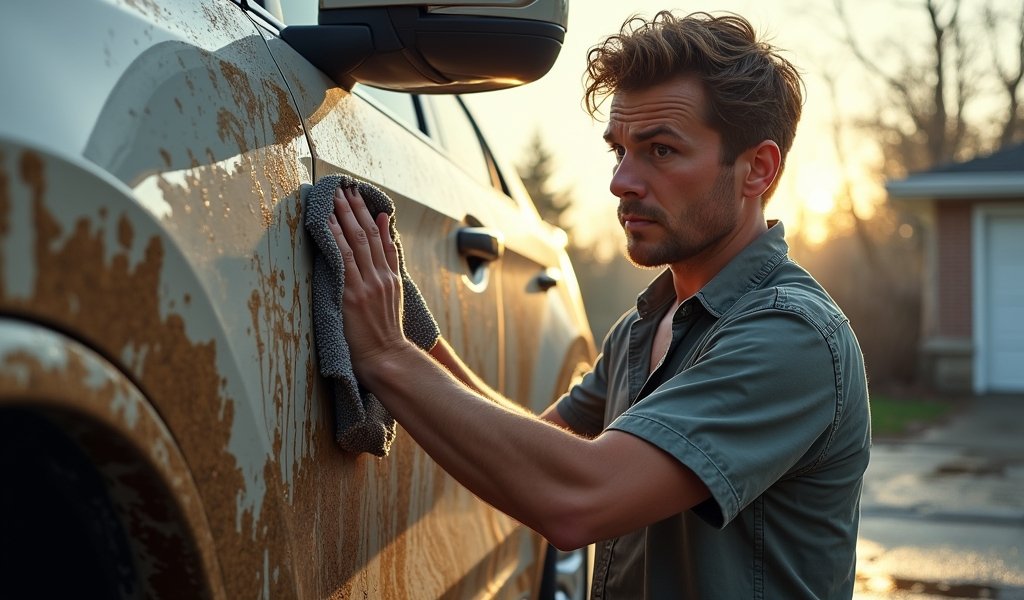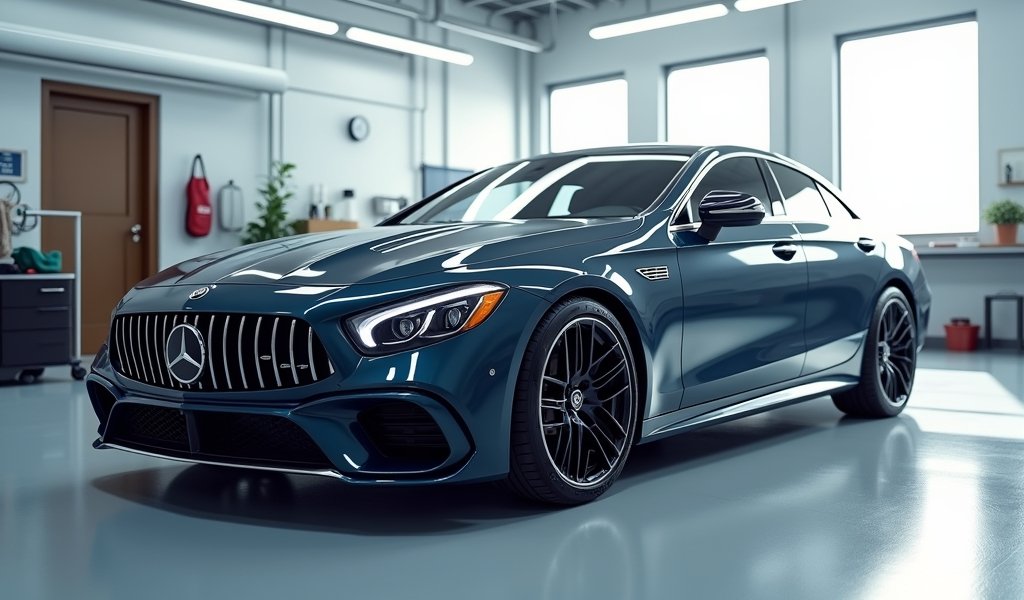Overview
This DIY car detailing guide covers seven professional techniques including the two-bucket washing method, microfiber tools, clay bar treatment, headlight restoration, interior cleaning, paint protection, and finishing touches. By following these methods, car owners can achieve professional-quality results at home while saving $150-300 per detailing session, maintaining their vehicle’s appearance, and preserving its resale value.
Table of Contents
- Introduction: Why DIY Car Detailing Matters
- The Two-Bucket Washing Method: Your Paint’s Best Friend
- Microfiber Magic: The Right Tools for the Job
- Clay Bar Treatment: The Secret to Silky Smooth Paint
- Headlight Restoration: See Clearly Again
- Interior Deep Cleaning: Where the Magic Happens
- Paint Protection: Keeping That Shine Lasting Longer
- The Finishing Touches: Details That Make a Difference
- Conclusion
- Frequently Asked Questions
Introduction: Why DIY Car Detailing Matters
There’s something deeply satisfying about transforming a dirty, neglected vehicle into a gleaming beauty that turns heads as you drive by. As a mechanic with 15+ years of experience, I’ve seen firsthand how proper detailing can revitalize a car both aesthetically and functionally.
DIY car detailing tips aren’t just about saving the $150-300 you’d spend at a professional shop (though that’s a nice bonus). It’s about developing a relationship with your vehicle and understanding its needs from the paint to the upholstery.
Whether you’re preparing your car for sale, restoring an aging vehicle, or simply maintaining your daily driver, these seven proven detailing tricks will help you achieve professional results without professional equipment. The best part? Most of these techniques use affordable products you might already have at home.
Let’s roll up our sleeves and dive into the world of DIY detailing that’ll make your ride shine like it just rolled off the showroom floor.
The Two-Bucket Washing Method: Your Paint’s Best Friend
If you’re still washing your car with a single bucket, you’re essentially rubbing dirt particles back into your paint with each dip of the sponge. The two-bucket method is the simplest change you can make that will dramatically improve your results and protect your vehicle’s finish.
What You’ll Need:
- Two 5-gallon buckets
- Grit guards for each bucket (optional but highly recommended)
- Quality car wash soap (never use dish soap!)
- Microfiber wash mitt
- Soft microfiber drying towels
The Process:
- Label one bucket “Wash” (soap solution) and the other “Rinse” (clean water)
- Always start by thoroughly rinsing your vehicle to remove loose debris
- Dip your mitt in the wash bucket and clean a small section of the car
- Rinse the mitt in the clean water bucket to remove dirt before returning to the soap
- Work from the top down, leaving wheels and lower panels for last
This method prevents cross-contamination and significantly reduces the risk of those dreaded swirl marks. According to Consumer Reports, improper washing is the most common cause of paint damage on otherwise well-maintained vehicles.
After washing, dry the vehicle with clean microfiber towels rather than letting it air dry. Water spots aren’t just unsightly—they can actually etch into your clear coat over time if left untreated.

Microfiber Magic: The Right Tools for the Job
You wouldn’t perform surgery with a butter knife, so why detail your prized vehicle with old t-shirts or cotton towels? Quality microfiber towels are the backbone of professional detailing, and they’re surprisingly affordable.
Different Types for Different Tasks:
- High pile (fluffy): Ideal for drying and buffing delicate surfaces
- Short pile: Perfect for applying waxes, sealants and polishes
- Waffle weave: Specifically designed for streak-free glass cleaning
- General purpose: Great for interior dusting and quick wipe-downs
Color-coding your towels will prevent cross-contamination. I keep blue towels for exterior, yellow for interior, and red specifically for wheels and engine bays. This simple system prevents transferring harsh chemicals or gritty particles between different areas of your vehicle.
Caring for Your Microfiber:
- Wash separately from regular laundry
- Avoid fabric softeners which clog the microfibers
- Use mild detergent and warm (not hot) water
- Air dry or use low heat settings
Properly maintained, a set of quality microfiber towels can last for years and deliver consistently superior results. A starter collection of 10-15 towels costs around $30-40 and will serve you through dozens of detailing sessions.
Clay Bar Treatment: The Secret to Silky Smooth Paint
Ever washed your car thoroughly only to find the paint still feels rough when you run your hand across it? Those tiny bumps are embedded contaminants that washing alone cannot remove. This is where clay bar treatment comes in.
Clay barring might look like magic when you first try it, but the science is simple. The malleable clay picks up microscopic particles like industrial fallout, tree sap, and road grime that have bonded to your paint. The result is a surface that feels as smooth as glass.
When to Clay Bar:
- When paint feels rough after washing
- Before applying wax or sealant for better bonding
- 2-4 times per year for most vehicles
- More frequently for cars parked outdoors in industrial areas
The Process:
- Wash and dry your vehicle thoroughly
- Spray a small section with clay lubricant
- Glide the clay bar back and forth with light pressure
- Wipe clean with a microfiber towel
- Move to the next section, folding the clay to a clean surface as it picks up contaminants
A professional clay bar treatment might cost $50-75 as part of a detailing package, but you can pick up a quality clay bar kit for around $20 that will treat multiple vehicles. It’s one of the most cost-effective ways to dramatically improve your paint’s appearance and prepare it for protection.
Remember, always follow clay barring with a wax or sealant application, as the process removes previous protection along with the contaminants.
Headlight Restoration: See Clearly Again
Foggy, yellowed headlights aren’t just an eyesore—they’re a safety hazard, reducing your visibility by up to 80% according to AAA research. Thankfully, restoring them is a straightforward DIY project with dramatic results.
Budget-Friendly Methods:
- Toothpaste method: Regular (not gel) toothpaste contains mild abrasives that can clear light oxidation. Apply with a soft cloth, rub in circular motions for several minutes, then rinse.
- Baking soda paste: Mix baking soda with enough water to form a paste, apply with a soft brush, work in circular motions, then rinse thoroughly.
- Vinegar wipe: For minor hazing, a solution of white vinegar can remove surface residue.
For Serious Restoration:
- Purchase a headlight restoration kit ($15-30) from any auto parts store
- Follow the kit instructions, which typically involve wet sanding with progressively finer grits
- Apply the included UV sealant to prevent rapid re-yellowing
The key to long-lasting results is the final UV sealant step, which many DIYers skip. Without proper protection, restored headlights can yellow again within months. Some professional detailers even apply automotive clear coat for the longest-lasting protection.
Considering professional headlight restoration typically costs $50-100, this is one of the most cost-effective and visually impactful car maintenance tips you can perform at home.

Interior Deep Cleaning: Where the Magic Happens
You spend more time inside your car than looking at the exterior, so interior detailing deserves special attention. A clean cabin not only enhances your driving experience but also protects your vehicle’s resale value.
Dashboard and Plastic Trim Care:
- Use interior cleaners specifically formulated for automotive surfaces
- Avoid silicone-heavy “dressings” that create shine but attract dust
- For textured plastics, use a soft detailing brush to reach crevices
- Apply products with a microfiber applicator rather than spraying directly on surfaces
- UV protectant helps prevent dashboard cracking and fading
Upholstery Cleaning:
- Cloth seats: Vacuum thoroughly, then use upholstery cleaner with a soft brush
- Leather seats: Clean with pH-balanced leather cleaner, follow with leather conditioner
- Carpet: Vacuum thoroughly, pre-treat stains, then clean with carpet cleaner
For stubborn stains, try these specialized solutions:
- Coffee/soda: Blot (don’t rub) with vinegar and water solution
- Grease: Sprinkle with cornstarch to absorb oil before cleaning
- Ink: Dab (don’t rub) with alcohol-based hand sanitizer
One pro tip that makes a huge difference: clean your air vents with a small paintbrush or compressed air. These often-overlooked areas can harbor dust and allergens that affect your in-car air quality.
After cleaning, I recommend running your A/C on high with windows cracked to help dry any remaining moisture in carpets and upholstery. This prevents that “wet dog” smell that can develop after interior cleaning.
Paint Protection: Keeping That Shine Lasting Longer
After all the work of cleaning and preparing your vehicle’s paint, you’ll want to protect that showroom shine. While professional ceramic coatings have gained popularity, there are excellent DIY options that provide substantial protection without breaking the bank.
Wax vs. Sealant vs. Ceramic:
- Carnauba wax: Natural product, warm glow, 1-3 months protection
- Synthetic wax: Easier application, 3-6 months protection
- Paint sealant: Enhanced durability, 6-12 months protection
- DIY ceramic: Spray-on formulas offering ceramic-like protection, 6+ months durability
For most DIYers, a quality synthetic sealant offers the best balance of durability, ease of application, and cost-effectiveness. Products like Jescar PowerLock Plus or Wolfgang Deep Gloss Paint Sealant provide exceptional protection without professional-level application requirements.
Application Tips:
- Less is more—thin, even coats bond better than thick layers
- Apply to cool surfaces in the shade for best results
- Work in small sections, allowing product to haze before removal
- Use separate applicators and towels for application and removal
Remember that even the best protection requires maintenance. A proper DIY car maintenance schedule should include a wash every 1-2 weeks, a quick spray wax or detailer monthly, and reapplication of your base protection according to the product’s durability.
The Finishing Touches: Details That Make a Difference
Often, it’s the small details that separate an amateur detailing job from a professional one. These finishing touches take minimal time but deliver maximum impact.
Perfect Glass Cleaning:
- Clean windows last after all other detailing is complete
- Use automotive glass cleaner or a 50/50 mix of white vinegar and water
- Spray onto your microfiber towel, not directly on glass
- Use waffle-weave microfiber towels for streak-free results
- Clean in two directions (horizontal outside, vertical inside) to easily identify streaks
Tire and Trim Enhancement:
- Clean tires thoroughly with dedicated tire cleaner before applying dressing
- Water-based dressings provide natural satin finish; silicone-based create a glossy look
- Apply dressing to an applicator, not directly to tires, to prevent sling
- For plastic trim, consider specialized restorers rather than temporary dressings
Don’t forget these often-overlooked areas:
- Door jambs and thresholds
- Under the hood (lightly detail with engine cool)
- Trunk gutters and hinges
- Exhaust tips (metal polish works wonders)
Finally, perform a “sunshine check” by viewing your vehicle in direct sunlight from multiple angles. This reveals missed spots, streaks, or leftover product residue that indoor lighting might hide.
Conclusion
DIY car detailing doesn’t require professional equipment or years of experience—just attention to detail and the right techniques. The seven tricks we’ve covered—two-bucket washing, microfiber tools, clay bar treatment, headlight restoration, interior deep cleaning, paint protection, and finishing touches—will transform your vehicle while saving hundreds of dollars compared to professional services.
Beyond the cost savings, there’s genuine satisfaction in stepping back and admiring your handiwork. That gleaming finish and pristine interior become a source of pride that makes every drive more enjoyable.
Start with these fundamentals, and as your skills grow, you can explore more advanced techniques like paint correction or leather restoration. Remember that consistency matters more than intensity—regular maintenance using these methods will keep your vehicle looking showroom-fresh year-round.
So grab your buckets, gather your microfibers, and turn that weekend car care into a rewarding ritual that pays dividends in vehicle value and driving pleasure. Your car deserves it—and so do you.
Frequently Asked Questions
How often should I detail my car?
A complete detail should be performed every 4-6 months for daily drivers. Quick maintenance details can be done monthly to maintain appearance between major sessions.
Can I use dish soap to wash my car?
Never use dish soap on your vehicle as it strips wax protection and can damage rubber and plastic components. Always use pH-balanced car wash soap specifically formulated for automotive finishes.
What’s the best way to remove water spots?
For fresh water spots, a 50/50 mix of distilled water and white vinegar usually works well. For stubborn, etched water spots, you may need a specialized water spot remover or light polishing compound.
Is it worth buying a pressure washer for car washing?
A pressure washer can be helpful but isn’t essential for quality results. If purchasing one, choose a unit with 1300-1900 PSI and use a 40-degree nozzle to prevent paint damage.
How can I prevent swirl marks when washing?
Use the two-bucket method, quality microfiber wash mitts, and ensure all materials are clean before touching your paint. Always wash from top to bottom and use straight-line motions rather than circular scrubbing.


Pingback: Best Car Air Purifier: 5 Proven Picks - knowsyourcar.com
Pingback: best car wash soap for shine: 5 Top Tips - knowsyourcar.com